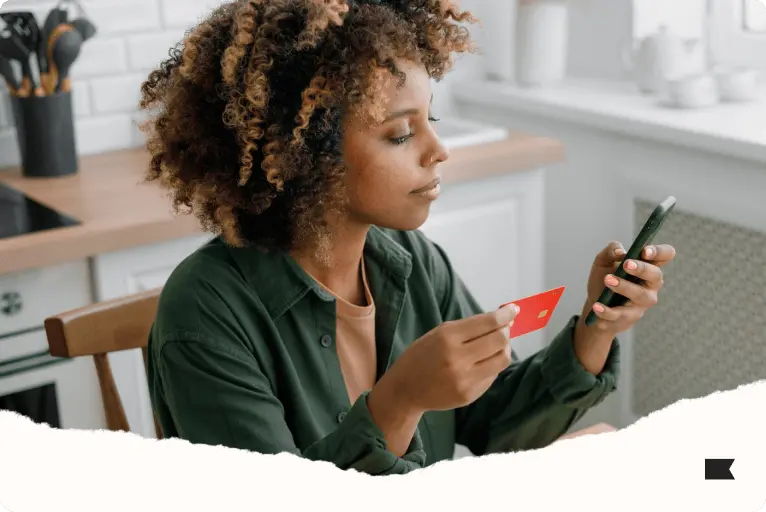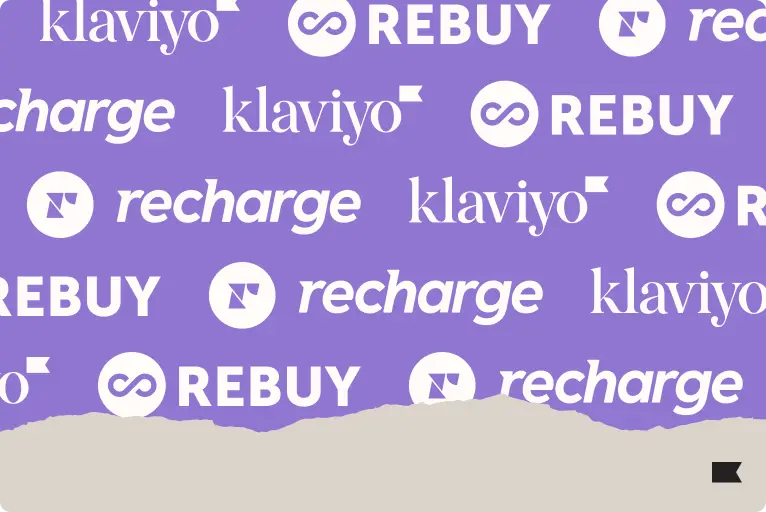Q&A: How switching to Klaviyo unlocked more integrated, efficient DTC marketing for Helen of Troy

Helen of Troy is a major, publicly-traded retail group that contains 15 major brands.
Their home and outdoor division alone includes 3 huge names: OXO, Osprey, and Hydro Flask.
In 2023, those 3 brands had 3M+ subscribers between them.
And in 2023, all 3 brands made the switch to Klaviyo.
Why? In retail groups of this size and complexity, changing marketing platforms is anything but casual. Email and SMS marketing are essential retention engines—and the slightest disruption or downtime on those channels is expensive.
“There was no room to mess up,” recalls Jennifer K., director of DTC acquisition and retention marketing for Helen of Troy’s home and outdoor division.
The retail group took the plunge anyway—and it was the right decision.
The initial cost reduction was north of 40% all in, including IT hours and the cost of the subscription.
That’s partially due to cost and time savings: “The initial cost reduction was north of 40% all in, including IT hours and the cost of the subscription,” says Anthony S., VP of DTC ecommerce for the home and outdoor division.
Another factor: increased functionality. With Klaviyo’s ecosystem of 350+ pre-built integrations, Helen of Troy can share first-party data across much more of their ecommerce marketing automation stack—“a win-win on all sorts of fronts,” Jennifer says.
There’s much more to this story, though. We chatted with Anthony and Jennifer about their journey to Klaviyo, and why their experiences before and after felt like night and day.
Note: this conversation has been condensed and edited for clarity.
Before you switched to Klaviyo, what business goals were you pursuing—and did they feel within reach?
Jennifer K.: When I first came into Helen of Troy, as a home and outdoor division, we were looking for major growth, and we had noticed that the percentage of total revenue from email was low. We didn’t even have basic flows set up, let alone multi-channel flows. We didn’t have the bandwidth for the coding that the flows required.
We were short on email marketing support. We had an agency, and we had just hired one email marketing manager for OXO. The team was having a lot of new thoughts on what was needed to ensure that they got the KPIs needed to drive the business. We wanted to make sure that we were growing the email business, especially in this increasingly cookieless environment.
We were looking for major growth, and we had noticed that the percentage of total revenue from email was low. We didn’t even have basic flows set up, let alone multi-channel flows.
What specific KPIs were you trying to grow?
Jennifer K.: Definitely revenue from email and SMS. We were also tracking average order value (AOV) of the email channel, and we wanted to make sure we’re growing the list. We invest a lot in paid media, and it’s our job on the retention side of the house to capture those net new consumers and then continually engage with them to make sure that they’re retained.
What were the biggest issues you faced with your previous email and SMS provider?
Jennifer K.: Beyond the challenges setting up flows, we were dealing with all sorts of issues regarding tracking. The biggest one was SMS tracking. It was like we’re flying blind. We had to go into Google Analytics to see revenue from SMS, and we did not have any SMS segmentation. We were just doing blasts.
When he first came in, Anthony said, “Low-hanging fruit, we need to send more SMS.” But we couldn’t—we just didn’t have enough data around growth coming from the SMS channel. We knew the power of SMS—that those subscribers are usually high engagers, high converters, high-AOV customers—but we didn’t have visibility into that. It was definitely not something that we could scale.
We were getting nickeled and dimed on the additional functionality, and then we still had to involve our IT team. IT told us it wasn’t workable.
Pricing was a big challenge with our previous provider, too. We had to pay extra for a bunch of functionality that Klaviyo gave us right out the door when we signed the contract. Before, everything was an upcharge, even checking deliverability across different inboxes. Our CSM was more like a sales manager. Towards the end, it was really off-putting.
Anthony S.: When I came aboard and heard about all the difficulty of getting just basic tasks done, I was surprised. Anytime we wanted to do something new or different with our previous provider, we were getting nickeled and dimed on the additional functionality, and then we still had to involve our IT team. IT told us it wasn’t workable. We started looking for a new vendor that was more modernized.
When you started evaluating alternatives, what drew you to Klaviyo?
Jennifer K.: We had both used Klaviyo in previous roles, and it felt like home. For our growing DTC business, we wanted to find a comprehensive platform that could accommodate email, SMS and MMS, and that was Klaviyo. To have cohesive support across 3 brands at Klaviyo was also a big selling point for us.
For our growing DTC business, we wanted to find a comprehensive platform that could accommodate email, SMS and MMS, and that was Klaviyo.
Anthony and I are divisional, and then each of the brand teams have their own teams, but knowledge sharing is something that we try to foster across those teams. Klaviyo made that easy.
Klaviyo also felt reliable. I’ll never forget when I was told that Bronto was sunsetting—that was just so hard. But Klaviyo was getting ready to go public, and had a robust roadmap to grow into a CDP. We knew that there was going to be constant investment into the platform.
Anthony S.: Frankly, reputation was a big part of this decision, both in terms of how well Klaviyo’s platform worked and in terms of support. Just what you hear in the industry, what you hear from friends, colleagues, past companies.
How did the migration to Klaviyo go?
Jennifer K.: Going in, we were stressed about the timeline. We were set on Klaviyo, but we were negotiating the contract up until the last minute. We only had a month to switch over to Klaviyo before our contract with our previous provider ended.
It ended up taking about a month to migrate all 3 brands. Everyone was pretty impressed.
I was worried that we weren’t going to have enough time for warming. When I’ve done migrations in the past, it’s taken a month or two to warm up the list. But we used one of Klaviyo’s shared IP addresses, and that really helped fast-track the warm-up. We only did one or two warming sends. It went really smoothly.
I was impressed with how easy the integration was, too. There was a direct integration between Magento (Adobe Commerce) and Klaviyo, and there was no code needed, basically. It ended up taking about a month to migrate all 3 brands. Everyone was pretty impressed.
Once you switched to Klaviyo, how did your total cost of ownership change for email and SMS?
Anthony S.: We definitely saw significant savings on total cost of ownership. The initial cost reduction was north of 40% all in, including IT hours and the cost of the subscription. We’re seeing hundreds fewer IT tickets on an annual basis. When I looked at how much our previous provider was costing us, I couldn’t believe it—especially given the functionality that they didn’t have. Cost of ownership was a big decision maker.
Did you see any memorable quick wins with Klaviyo once you made the switch?
Jennifer K.: We were definitely able to hit the ground running. We could build out more flows. We were able to send more. And then personally, because I also oversee the paid media for the brands, I was excited that I was able to connect all of our paid media platforms—Google Ads, Facebook Ads, and now TikTok ads, too—into Klaviyo.
How has Klaviyo’s ecosystem changed your DTC marketing operations?
Jennifer K.: Previously, we were not leveraging a lot of first party data, and that was very top of mind for leadership. This increasingly cookieless environment is really hard to navigate. We just don’t have as much access to customer data as we used to through our pixels. So we utilize Klaviyo integrations right now to build exclusion lists within our paid media campaigns, and build lookalikes off high-value customer segments. Having that data flowing through Klaviyo has been a win on all sorts of fronts.
We just don’t have as much access to customer data as we used to through our pixels. So we utilize Klaviyo integrations right now to build exclusion lists within our paid media campaigns, and build lookalikes off high-value customer segments.
We just launched a loyalty program this year, too. Loyalty is so important to DTC brands. We knew that we would be able to do it easier with Klaviyo than with our previous provider, where it would have taken a lot of back-end work, and any integration would have had connection issues.
Anthony S.: As we’re adding more third-party vendors to our mix, Klaviyo already had existing relationships with the major players across our tech stack. That’s huge, because it takes less work for us to get started, and it reduces developer hours.
What benefits are your teams reporting so far from having email, SMS, and customer data in Klaviyo?
Jennifer K.: Having data for both channels in one place is amazing. We can see revenue attributed to email and SMS. The email marketing managers love that they’ve been able to use multi-channel flows, and just having more insight into how consumers engage with our messaging, whether it’s through email or SMS.
Segmentation across email and SMS is also key to our success. On our previous platform, we could barely segment at all. Getting the right message to the right consumer at the right time is really the biggest unlock we’ve seen.
You’re starting with Klaviyo’s Advanced KDP soon—how does that fit into your roadmap?
Anthony S.: It’s going to make it easier to use our existing customer data. We have collected a lot of individual consumers’ transaction data, but it’s been one of those things you look at once a quarter and put in a PowerPoint presentation. It’s been purely informational. The point of adding the Advanced Klaviyo Data Platform (KDP) is to act on the data and communicate with our customers at a more granular, personalized level based on where they fall in the consumer journey.
Klaviyo’s Advanced KDP is awesome, because managing a separate CDP vendor at a huge cost—it’s just not something that we wanted to take on just not something that we wanted to take on. This way, we have email, SMS, and our CDP all in one platform that we’re already using. Less integration, less work, and less cost.
Klaviyo adding CDP functionality is awesome. This way, we have email, SMS, and our CDP all in one platform that we’re already using. Less integration, less work, and less cost.
Related content
- Case study: Helen of Troy sees 40%+ TCO reduction from switching to Klaviyo for email + SMS
- 8 BFCM email tips from Western outfitter Tecovas’s superstar marketing team
- How to scale your laid-back brand, according to Marine Layer

Related content

Discover the best marketing automation platform for 2026 and learn how to choose based on data, integrations, scalability, and the features that drive real customer value.

Discover 4 proven ways to reduce cart abandonment and recover lost sales. Learn how to build trust, streamline check-out, and personalize abandoned cart flows to convert more shoppers.

Looking for the best Shopify apps for marketing and customer service? Klaviyo, Rebuy, and Recharge together create a high-performing tech stack that revenue and customer retention.